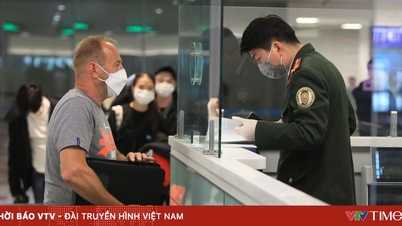
The picture reflects the effectiveness of local integration.
Previously, after a period of surveying and research, in April 2025, the Ministry of Industry and Trade announced the FTA Index for evaluating the implementation of Free Trade Agreements at the local level in 2024, marking an important milestone in Vietnam's process of international economic integration. This is the first time that the level of implementation and utilization of FTAs has been systematically measured at the local level, clearly reflecting the capacity and methods of realizing integration commitments.
The index is built on four main pillars: dissemination and promotion of FTAs; implementation of legal regulations; policies supporting enhanced competitiveness; and implementation of sustainable development commitments.
According to Ngo Chung Khanh, Deputy Director of the Multilateral Trade Policy Department (Ministry of Industry and Trade), the FTA Index is a "barometer" that helps Vietnam clearly see the picture of integration at each level. Besides the positive results, limitations and differences between localities mainly stem from leadership mindset and resource allocation. "Many localities only have one official in charge of FTAs, making it difficult to meet the needs of businesses; while most businesses lack a legal department or experts with in-depth knowledge of international commitments," Mr. Ngo Chung Khanh stated.
From a research perspective, Associate Professor Dr. Dao Ngoc Tien, Vice Rector of the Foreign Trade University, the unit that analyzed the data for the FTA Index, stated: “Some localities have small export scales but good FTA Index scores thanks to their dynamic and proactive governments connecting with and supporting businesses. Conversely, many localities still do not consider FTAs as a long-term strategy, leading to fragmented and largely superficial implementation.”
Another noteworthy point is the significant disparity in the pillar of sustainable development. Ca Mau is a prime example, leading the country thanks to the close cooperation between the government and businesses in environmental protection and sustainable fisheries exploitation – a key element in new-generation FTAs.
From the business community's perspective, Dr. Nguyen Van Than, Chairman of the Vietnam Association of Small and Medium Enterprises (VINASME), commented: "The majority of small and medium-sized enterprises are still struggling with processing and lack strategies for penetrating FTA markets. They have not fully grasped the impact of integration on their competitiveness."
Change mindset, make substantive improvements.
Following the first year of the FTA Index's publication, experts have observed that many localities have become more proactive. According to Dr. Dao Ngoc Tien, while previously FTA activities were limited to propaganda and seminars, many provinces have now developed specific plans for each industry, identified key markets, and focused on supporting export businesses.
Deputy Director of the Multilateral Trade Policy Department, Ngo Chung Khanh, also highly appreciated this shift, emphasizing: "Most importantly, provincial and city leaders must directly participate in discussing how to utilize FTAs to genuinely support businesses, not just to 'boost scores'." According to Mr. Ngo Chung Khanh, the Ministry of Industry and Trade is aiming to elevate the FTA Index into a criterion for evaluating local integration capacity, thereby creating positive pressure on local leaders to prioritize investment in human resources, policies, and supporting infrastructure.
To ensure the FTA Index plays a truly effective role, Dr. Dao Ngoc Tien recommends adjusting the weighting of indicators, increasing the role of the sustainable development pillar and non-tariff preferences, and expanding the scope of the survey to include cooperatives and collective economic entities – forces that are making increasingly significant contributions to exports but are not fully reflected in the index.
Based on practical implementation experience, the Ministry of Industry and Trade is also coordinating with other ministries, sectors, and localities to develop a more realistic set of questions, helping localities "improve their scores" while simultaneously improving quality – that is, improving implementation capacity, not just achieving results.
Furthermore, experts warn that the volatile global economic landscape, marked by protectionist trends, trade conflicts, and demands for green development, makes leveraging new-generation FTAs more urgent than ever. Deputy Director of the Multilateral Trade Policy Department, Ngo Chung Khanh, argues that Vietnamese businesses need to diversify their export markets, avoid dependence on traditional markets, and invest in green transformation, clean energy, and traceability, as these are essential "passports" for Vietnamese goods to expand internationally.
Overall, the FTA Index is not just a measuring tool, but a "mirror" reflecting the effectiveness of integration – a place where each locality and business can look at itself to guide its actions. When this index is considered an official benchmark and when businesses and the government share a common vision for sustainable integration, FTAs will truly become a driving force for national growth, helping Vietnam assert its position in the global value chain.
Source: https://hanoimoi.vn/de-fta-index-thuc-su-la-dong-luc-tang-truong-721852.html



![[Photo] Prime Minister Pham Minh Chinh attends the Conference on the Implementation of Tasks for 2026 of the Industry and Trade Sector](/_next/image?url=https%3A%2F%2Fvphoto.vietnam.vn%2Fthumb%2F1200x675%2Fvietnam%2Fresource%2FIMAGE%2F2025%2F12%2F19%2F1766159500458_ndo_br_shared31-jpg.webp&w=3840&q=75)














































































































Comment (0)